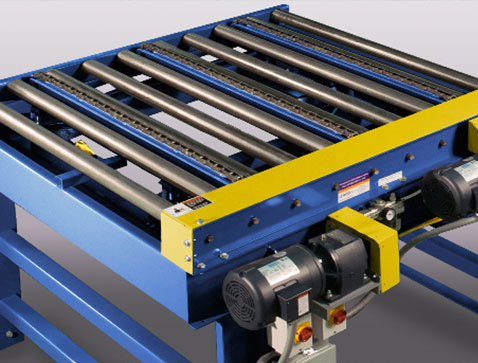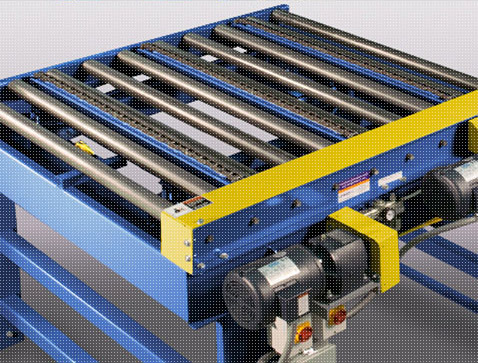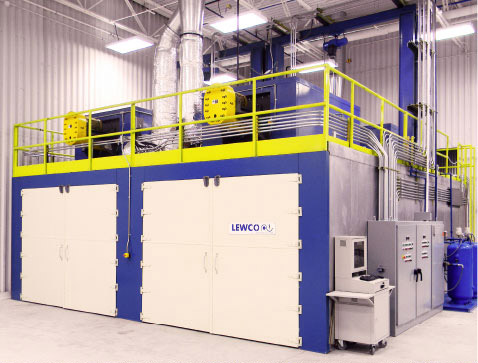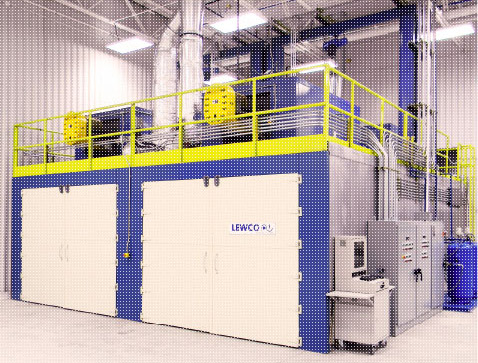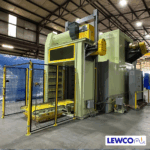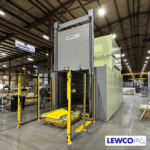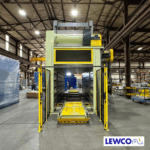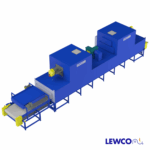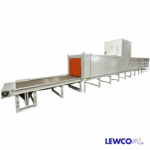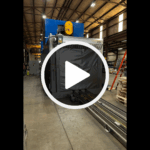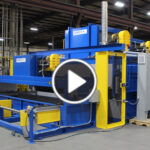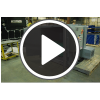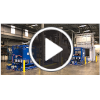500°F Composite Curing Oven for Military Base
Recently, LEWCO, Inc. delivered an enhanced duty vacuum assisted composite curing oven to a United States military base. The oven has a maximum temperature of 500°F and is used to cure vacuum-bagged composite aircraft parts. 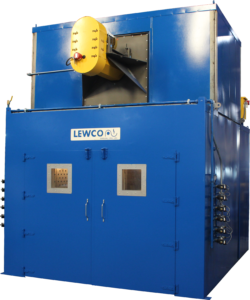
The vacuum assisted composite curing (VACC) process involves drawing a vacuum on composite lay ups in vacuum bags, or tooling, while cured in an oven. LEWCO supports this process by equipping composite curing ovens with a vacuum pump, part monitoring thermocouple jacks, vacuum ports, and transducer ports. This oven is equipped with (12) vacuum ports, (12) vacuum transducer ports, and (16) type “J” thermocouples jacks. The vacuum ports are equally spaced down both sides of the oven and connected to a common header pipe. The header pipe includes an isolation valve for each side and another one at the main connection to the source. Each port includes a high temperature quick disconnect fitting on the interior. The thermocouples are divided into two 8-port jack panels located on each side of the oven. All the jacks are wired directly to the control panel for continuous monitoring and recording.
The enhanced duty batch oven features a top mounted heater-box with a 700,000 BTU direct fired natural gas burner and a 30,000 CFM high-efficiency circulation fan providing uniform heat throughout the workspace. A variable speed drive is included on the exhaust fan for controlled cooling cycles and shorter purge time. The airflow of the oven is designed to meet strict temperature uniformity requirements. The size and placement of the air supply duct are vital in providing proper airflow and heat transfer. The temperature uniformity exceeded customer specifications of +/- 10°F.
Oven controls include a Programmable Logic Controller (PLC) with a touchscreen Human Machine Interface (HMI) that includes LEWCO’s composite curing program. A Eurotherm Nanodac temperature controller and redundant high-limit controller provide precise temperature control and over-temperature protection. This controller has a multitude of capabilities, such as serial communication port, ramp/ soak programming and data logging. The equipment and controls are designed to be compliant with AMS2750E Class 2, Type D instrumentation.

